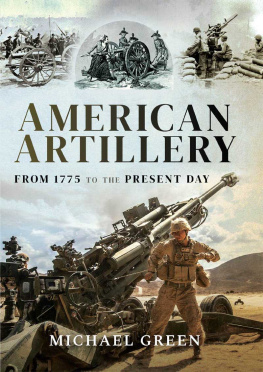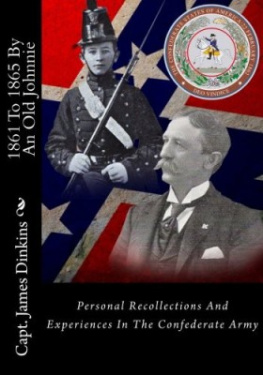This edition is published by PICKLE PARTNERS PUBLISHINGwww.picklepartnerspublishing.com
To join our mailing list for new titles or for issues with our books picklepublishing@gmail.com
Or on Facebook
Text originally published in 1960 under the same title.
Pickle Partners Publishing 2014, all rights reserved. No part of this publication may be reproduced, stored in a retrieval system or transmitted by any means, electrical, mechanical or otherwise without the written permission of the copyright holder.
Publishers Note
Although in most cases we have retained the Authors original spelling and grammar to authentically reproduce the work of the Author and the original intent of such material, some additional notes and clarifications have been added for the modern readers benefit.
We have also made every effort to include all maps and illustrations of the original edition the limitations of formatting do not allow of including larger maps, we will upload as many of these maps as possible.
THE STORY OF THE FIELD ARTILLERY OF THE ARMY OF THE POTOMAC, 1861-1865
L. Van Loan Naisawald
PREFACE
THE ROLE of field artillery in the American Civil War is all too often beclouded by the names of great commandersLee, Grant, Sherman, Longstreet, and Jacksonor by the picture of rolling waves of infantry symbolized by such names as the Iron Brigade, Hoods Texans, A. P. Hills Light Division, the Irish Brigade, and many others. Virtually forgotten are the batteries which backed up the infantry. Jennings Wise has told the story of the Confederate artillery in The Long Arm of Lee, but the names of such Federal artillerymen as Cushing, Cowan, Hazard, Hall, Dilger, or even Generals Hunt and Barry, are seldom mentioned in accounts of the war.
The Army of the Potomac was saved several times because of this arm and these men. It escaped probable defeat and destruction at Malvern Hill by the massed fire of its artillery. So it was at Fairview during Chancellorsville; and the enfilading fire of Meades artillery took the weight out of the last desperate attack against his lines at Gettysburg. The mention of the exploits of the artillery is usually relegated to generalizations, with the individual commanders and their batteries lost in collective terminology.
The purpose of this work is twofold. I have endeavored to tell the story of the field artilleryman of the Union Army of the Potomac, and second, to show the part this arm played: its capabilities and limitations, its equipment and organization. This study treats only the operations of the Army of the Potomac and its predecessors, from 1861 till the final campaign in April 1865. I have dealt only with the field batteries except as it became necessary to incorporate the activities of some of the heavy batteries in front of Petersburg. The heavy artillery units of the Army saw little action except as infantry, and this only in the closing months of the war. As such their role as artillery per se was a minor one.
The point should become evident as the story unfolds that field artillery of that day was a potent forcebut only defensively. No offensive operation of either side was decisively affected by the offensive use of artillery; it was beyond the capabilities of the matriel and fire control systems of that era. A great principle did evolve, though, the principle of divisional massed artillery, with additional massed gum available to corps commanders. It was a crude system, a system that was to a great extent only a vague theory superimposed on infantry command channels and organization. But the beginnings of the present-day tactics of massing fires can be seen through the battle haze of the American Civil War.
In the opening chapter of this narrative the reader may become confused by the technical terms used in describing the Federal weapons as they rolled into firing positions. The author hopes, however, that the reader will bear with the story until the second chapter in which the description of the various weapons is covered in detail. To have begun this saga with a dull and dry treatise on the ordnance matriel then in use might have prevented some readers from ever reaching the action chapters which are the true heart of the book. For this reason the narrative begins with the first major action of the war, the First Bull Run.
While I have covered the life of the artillery of the Union Army of the Potomac, the story would be somewhat similar for the Western armies, though it would appear on the basis of limited research that these armies had a slightly wider variety of matriel and fewer cannon per thousand men, and lagged a bit behind Hunts theories of centralized control. A veteran of the Army of the Potomac, however, would not have felt himself an utter stranger in the artillery camps of the Western armies.
In writing this book the principal source was of course the standard published volumes of the Official Records of the Union and Confederate Armies in the War of the Rebellion, usually referred to as the Official Records or ORs. To catch the human interest angle, the little personal items that never reached the official reports, the unofficial histories were referred to. Unfortunately, few artillery units ever put their sagas into print. Of the many Regular Army batteries which served throughout the war only one, Battery B, 4th U.S. Artillery, seems to have published its story. Of the Volunteer units, only a half-dozen were found to be rich in detail and narrative. Of inestimatable value has been the monographic material done by the National Park personnel at the various National Battlefield Parks. Joseph Mills Hanson did some helpful research on the First and Second Bull Run actions and on the artillery engaged at Antietam.
There were a few manuals in existence at the time (of which copies exist today), and these were absolutely necessary for the technical detail. Of primary importance were the editions of Instruction for Field Artillery, all of which remained basically unchanged throughout the war; Bentons Ordnance and Gunnery, and John Gibbons Artillerists Manual. Also of great assistance in getting a feel for the subject were Gen. Hunts series of articles on Artillery in the Great Rebellion, which appeared in the Journal of the Military Service Institute, a military magazine of the postwar era. It is most regrettable that Gen. Hunt left no memoirs and that no scholarly biography of the man exists. Gen. Hunt is buried with other members of his family in the National Cemetery of the U.S. Soldiers Home, Washington, D.C.
The manuscript material which the author examined unfortunately had little that could be used in this rather specialized story of the war. Diaries and letters of artillery soldiers were extremely scarce.
L.V.N.








